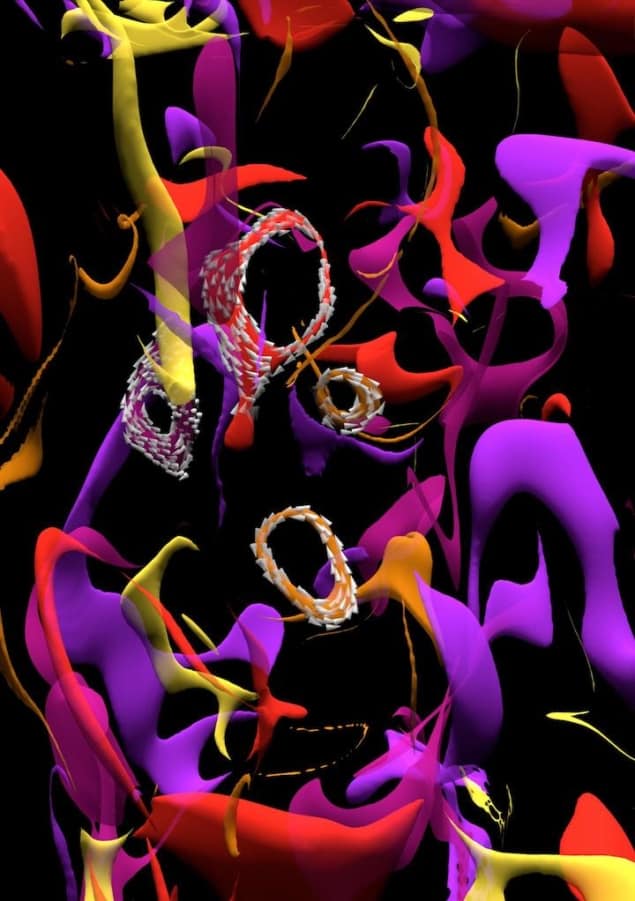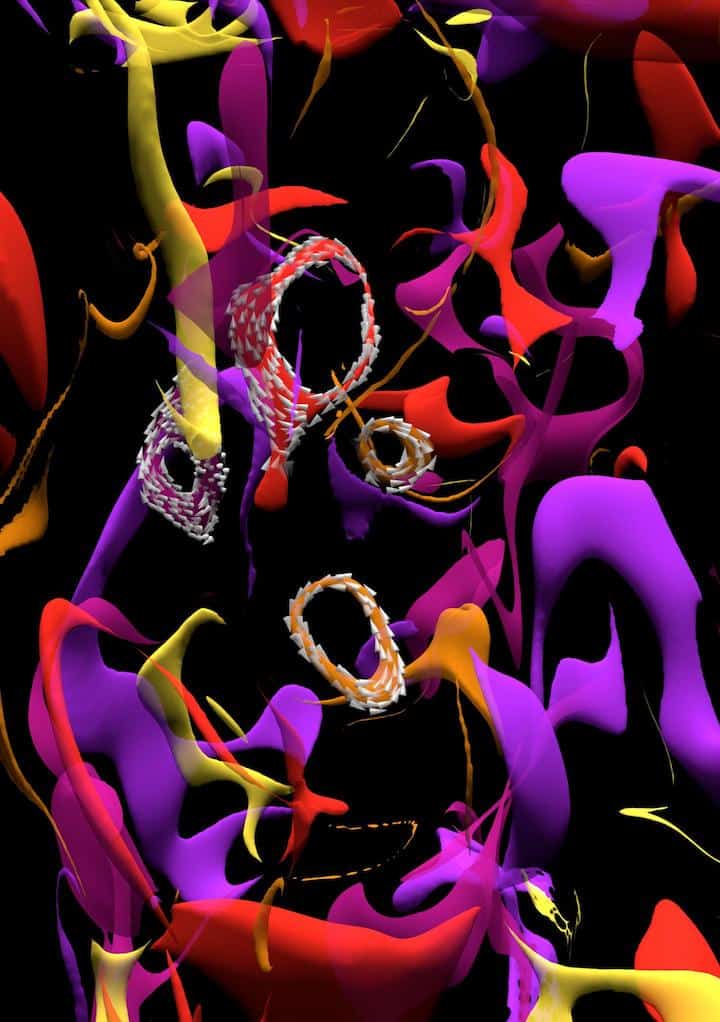
Researchers have observed three-dimensional magnetic vortex rings in a real-world magnetic material for the first time. Contrary to theoretical predictions, these rings – which are spin configurations within the material’s bulk – are remarkably stable and could move through the material like smoke rings move through air. If such movement can be controlled, they might have applications in energy-efficient 3D data storage and processing.
In a ferromagnetic material, the spatial distribution of the local magnetization is responsible for the material’s magnetic properties. These spatial distributions can be very complex, and intricate magnetic “textures” are behind many modern technologies, including hard disk drives. A vortex is one such distribution, and it forms when the material’s magnetization circulates around a central core.
Vortex rings are more sophisticated still, and occur naturally in physical systems such as fluids, plasmas and turbulent gases in the Earth’s atmosphere. However, while they have long been predicted to exist in ferromagnets, they have never been observed there until now.
X-ray magnetic tomography
Scientists led by Sebastian Gliga of the Paul Scherrer Institute in Switzerland discovered these doughnut-shaped ring patterns in nanoscale structures of gadolinium cobalt. The result comes thanks to a technique the group developed in 2017 called X-ray magnetic tomography, which enables them to observe nanoscale magnetic configurations in 3D, deep within a micron-sized sample. Before this advance, researchers were only able to visualize magnetization structures a few layers below a material’s surface.
Claire Donnelly, the study’s co-lead author and a physicist at the University of Cambridge in the UK, says that new data analysis techniques were also crucial. These new techniques allowed the researchers to pick out topological structures – such as rings – within their dataset via calculations of the magnetic vorticity vector. “Calculating this quantity and observing that it circulates around loops (just as a smoke ring’s vorticity vector would) allowed us to identify the magnetic vortex rings,” Donnelly says.
The stability of these rings was unexpected, notes Konstantin Metlov, the study’s other co-lead author and a researcher at the Donetsk Institute for Physics and Engineering and the Institute for Numerical Mathematics RAS in Moscow, Russia. This is because they were predicted to be dynamic, moving objects. Their stability appears to come from the long-range interaction between electron spins in the material – a phenomenon that had not been considered before. “This is very exciting, since it implies that such complex 3D magnetic structures – and possibly other more topologically non-trivial ones – may be easier to stabilise than originally thought,” the researchers tell Physics World.

3D knots appear in liquid crystals
Practical applications
According to Gliga, Donnelly, Metlov and colleagues, the rings’ stability could be important for practical applications because it means they could move through magnetic materials. Learning how to control these structures within the volume of a magnet might thus aid the development of 3D magnetic data storage and processing.
The researchers, who report their work in Nature Physics, say they plan to extend their investigations using, for example, time-resolved techniques they developed earlier this year. This would give them a glimpse of how vortex rings actually move. “We also want to find out how they are created in the first place – and how they collapse,” Donnelly says. “Now that we can observe these systems in experiments, we’ll also be looking out for more complex structures, like knotted vortex rings.”
